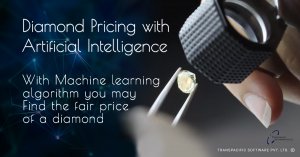Prashant Telang
Rough_Rock
- Joined
- Apr 26, 2017
- Messages
- 9
Over the last several weeks TransPacific Software is working on various Linear and Neural Network models using Google's TensorFlow AI library to achieve fairly accurate diamond pricing tool. This tool can be used to find the fair price of the diamond in the current B2B market.
Tool is available on: http://52.14.211.195/ai/
Blog post detailing the Machine learning technology used is here This is a pure research project with no commercial value. Please do let us know your feedback
Please do let us know your feedback
Tool is available on: http://52.14.211.195/ai/
Blog post detailing the Machine learning technology used is here This is a pure research project with no commercial value.
 Please do let us know your feedback
Please do let us know your feedback


300x240.png)